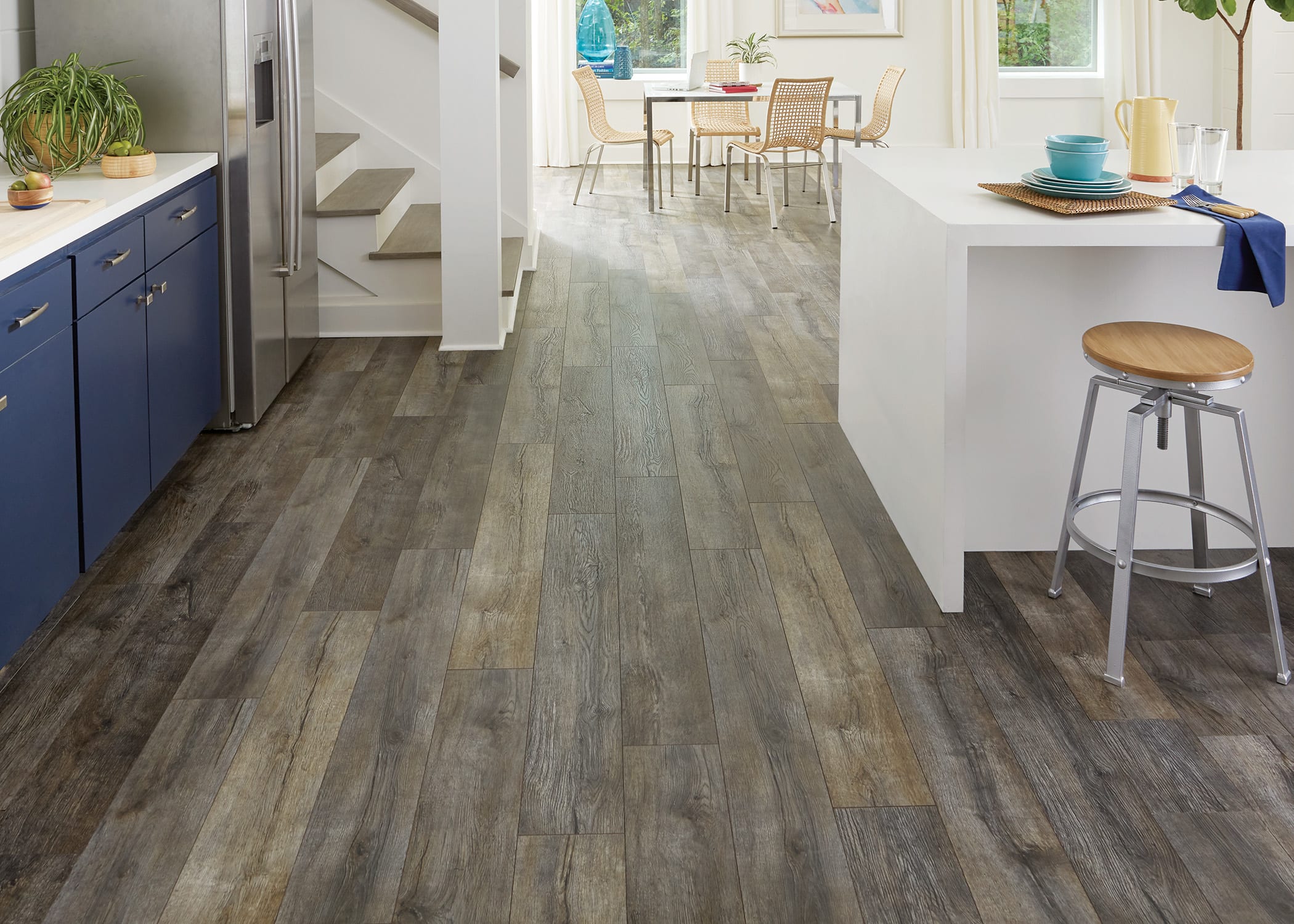- Home
- Education
- Installation Tips and Guides
- How to Install Dream Home Laminate Flooring
How to Install Dream Home Laminate Flooring
Many of our customers are the DIY type. Hopefully this guide will help you with installing your new Dream Home flooring.
Before you get started, make sure you have carefully prepared your floor (concrete, wood, sheet & tile flooring, carpeting, or radiant heat) properly for smooth installation and that the subfloor requirements have been met.

PRECAUTIONS, STORAGE & HANDLING, ROOM PREPARATION
- DREAMHOME Laminate Flooring must be stored flat, horizontally and stacked no more than four cartons high at all times. Improper storage can result in warping and difficult assembly. Protect carton corners from damage.
- Storage area and job site should be climate-controlled with ideal temperatures of 65°F-75°F, humidity under 75%.
- Do not store directly on cement, allow for air circulation. Protect from rain, moisture.
- Laminates with pre-attached padding do not need additional underlayment. If building associations require extra sound isolation, the use of heavier type underlayments such as Dream Home's Cork Underlayment, Quiet Walk, or Insulayment is recommended to support the locking system.
- For rooms larger than 27′ in any direction, the use of center T-moldings is required to allow for the normal movement or seasonal expansion of the entire installed floor.
- Install under moldings and doorway transition moldings. New molding must be of sufficient size to cover the expansion area around the perimeter of the floor.
- Leave at least ½” between the surface of the flooring and the bottom of electric baseboard heaters to allow heat to circulate.
- Do not fit this floor tight against any fixed, vertical objects (ex. walls, pipes, passageways, staircases). A minimum of ¼” to ½” expansion space is required around the perimeter of the room as well as any fixed objects. Provide ½”? expansion for ½”? thick flooring. All floating floors require fixed cabinets to be installed first before installing planks.
- Undercut door moldings and casings to allow the flooring to fit underneath without restriction. Use a scrap piece of laminate and foam underlayment as a spacer guide.
- After installation, it may be necessary to trim the bottom of doors to allow for new floor height.
- A moisture barrier, 6mm-8mm polyethylene sheet plastic must be installed completely over tiles, kitchen vinyl or concrete prior to installation. Overlap the plastic 6 inches and tape the entire length of the seam with duct tape.
- For best shade appearance, install planks from several boxes. Keep an extra box of materials for repairs.
- Clean cuts are achieved using a thin kerf, carbide tipped saw blade. Blade cut rotation should cut into the décor or finished side of the plank.
TOOLS AND MATERIALS
Undercut Saw, Table Saw, Miter Saw, Circular Saw, Jig Saw, 1/4" or 1/2″? Spacers, hammer, tapping block, tape Measure, T-square, PVA laminate glue as needed, tape, safety glasses, broom/vacuum, underlayment, 6mm-8mm Polyethylene sheet plastic as a moisture barrier over concrete (Do not use plastic over bare wood subfloors).
GETTING STARTED
- Inspect all planks for visible defects and damage before and during installation. Do not install damaged planks. During installation, inspect the groove area for any debris that may prevent proper assembly of planks.
- DREAMHOME Laminate Flooring will not accept responsibility for claims on flooring installed with obvious defects.
- Determine in which direction the planks will be installed. To make the room appear larger or if installing in very small rooms or hallways, it is preferable to lay the planks parallel to the longest room dimension.
- End-joint “shadow” can be minimized, avoid running board direction into the primary light source.
- Carefully measure the room to determine squareness and the width of the first and last row of planks. If the width of the last row of planks is less than 2″? excluding the tongue, adjust the width of first plank row accordingly.
Read instructions with images below, or Click to Open this Guide for Printing.
Note: To be sure you are using the correct instructions, be sure to locate the product details page of your exact flooring product, and scroll down to Warranty & Guides.
Learn more about new flooring on our Flooring Basics page.
Shop all new flooring at https://www.llflooring.com/
Find the flooring store closest to you: https://www.llflooring.com/stores/
Or reach out to a flooring expert to describe your project: https://www.llflooring.com/support/customer-care/
We would be happy to help.


